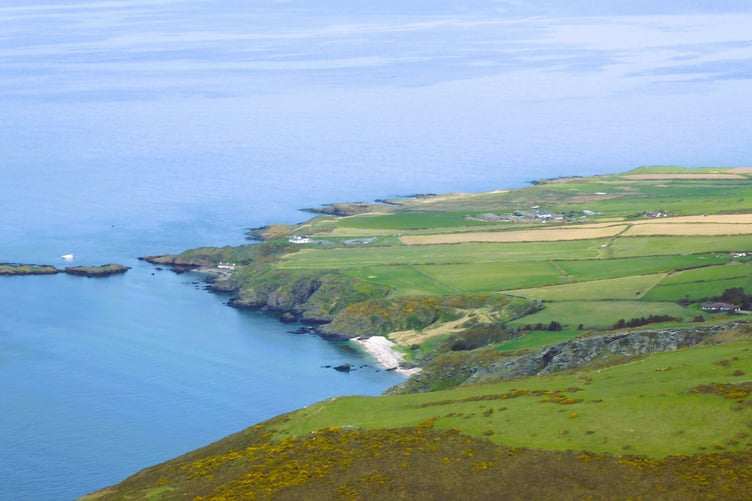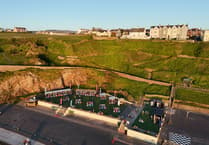In this month’s Manx Wildlife Trust column, Lara Howe takes a look at the Manx Marine Nature Reserve of Niarbyl Bay.
Covering approximately 5.66 km², Nairbyl Bay accounts for just over 1% of the island’s reserve network.
Initially designated as a Fisheries Closed Area in 2009, thousands of scallops were translocated from the Targets fishing ground and reseeded here to help boost the inshore population.
Tucked beneath dramatic cliffs and rolling hills in the island’s west coast, Niarbyl Bay is divided into two distinct halves.
The northern section is dominated by rocky reef and lush kelp forests, while the southern end consists of coarser mixed sediments. These contrasting habitats support a wide array of species, making the bay a biodiversity hotspot.
The rocky reefs, with their gullies, overhangs, and vertical faces, offer complex habitats where many marine animals find shelter and food. These include sea squirts, sponges, fish, and a variety of algae.
Niarbyl is also known more recently for its population of stalked jellyfish, particularly Haliclystus octoradiatus.
In May 2022, a Seasearch snorkeller reported a dramatic surge in their numbers, suggesting the bay might serve as a nursery ground for this species.
Seasearch volunteers returned in May this year to monitor the site; while numbers were lower than during the initial sighting, tens of individuals were still recorded, indicating that Niarbyl remains an important area for stalked jellyfish.
Volunteers are also monitoring for other priority species this season. For more information on how to get involved and to find out which key species to look out for, visit https://www.mwt.im/citizen-science/seasearch.
The southern half of the bay is home to species adapted to softer sediment habitats. Worms, brittlestars, maerl, and a variety of bivalve molluscs, including scallops and the Iceland clam, can be found here.
The Iceland clam (Arctica islandica), believed to be the world’s longest-lived animal at over 500 years old, grows very slowly and is sensitive to disturbance.
Intertidally, the reserve also supports blue, or edible, mussels (Mytilus edulis). Although common in the UK, they are less widespread around the Isle of Man. They are a favourite prey of the common dogwhelk (Nucella lapillus), which is frequently found on these shores.
Dogwhelks use a toothed tongue-like structure called a radula to drill through mussel shells, secreting digestive enzymes and then using their proboscis (a tubular mouthpart) to suck out the liquefied insides.
Another common gastropod here is the periwinkle, which comes together in May to spawn.
The oceanic waters of the Atlantic flow northward and mix with the Irish Sea at Niarbyl, concentrating plankton in the area and attracting summer visitors such as basking sharks (Cetorhinus maximus).
Although sightings have declined in recent years, several have already been seen off Niarbyl and Dalby this May, hopefully a sign of a busy summer ahead.
These nutrient-rich waters also support important fisheries including crab and lobster, and act as a nursery for juvenile fish, which in turn provide food for seals and seabirds.
Shags and fulmars breed on the cliffs surrounding the reserve, making Niarbyl a vital link in both marine and coastal ecosystems.

.jfif?width=209&height=140&crop=209:145,smart&quality=75)
.jpeg?width=209&height=140&crop=209:145,smart&quality=75)


Comments
This article has no comments yet. Be the first to leave a comment.